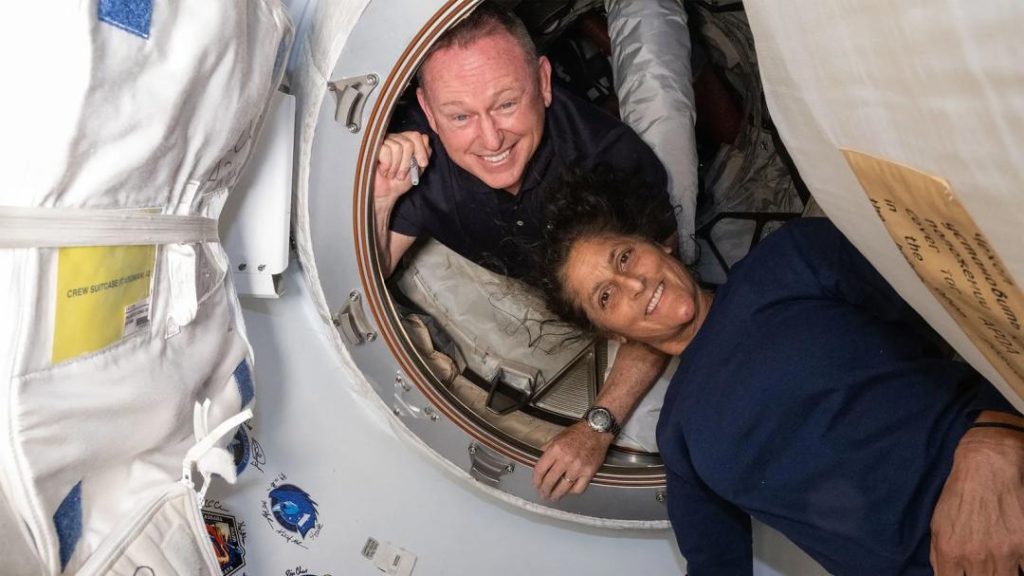
What challenges will Sunita Williams & Butch Wilmore face after returning to Earth?
As astronauts Sunita Williams and Butch Wilmore prepare to return to Earth next week, they may face a set of challenges that will make their transition back to life on our planet a bit more difficult. For one, they will experience a peculiar phenomenon known as “baby feet” – a condition where their feet will temporarily lose some of their normal shape due to the effects of prolonged weightlessness.
This is just one of the many challenges that astronauts face when returning to Earth after spending extended periods in space. According to experts, astronauts who spend months in space will experience a range of physical and physiological changes that can make re-entry into Earth’s gravitational environment a bit of a struggle.
One of the primary concerns is the loss of blood volume in space. Due to the microgravity environment, the body doesn’t need to work as hard to pump blood, which can lead to a reduction in blood volume. When astronauts return to Earth, this reduced blood volume can cause a range of symptoms, including dizziness, nausea, and even fainting.
“This is because the body has adapted to the microgravity environment, and when you return to Earth, your body has to readjust to the higher gravity,” explained Dr. David Nixon, an expert in space medicine at the University of California, San Francisco. “This can lead to a range of symptoms, including dizziness, nausea, and even fainting.”
In addition to the challenges related to blood volume, astronauts also face the issue of bone density loss. Prolonged exposure to microgravity can cause bones to lose density, a condition known as osteoporosis. This can make astronauts more susceptible to fractures and other bone-related injuries.
To counteract this loss, astronauts undergo a range of exercises and physical therapy sessions during their time in space. However, even with these precautions, some degree of bone density loss is inevitable.
“When astronauts return to Earth, they will need to engage in a range of exercises and physical activities to help rebuild bone density,” said Dr. Nixon. “This can include activities such as weightlifting, running, and other forms of exercise that help stimulate bone growth.”
Another challenge that astronauts face when returning to Earth is the issue of “baby feet.” As mentioned earlier, prolonged exposure to microgravity can cause the feet to lose some of their normal shape and function. This is because the muscles in the feet and ankles are not used to the same extent in space, leading to a loss of strength and flexibility.
“This can make it difficult for astronauts to walk and engage in other physical activities when they return to Earth,” said Dr. Nixon. “It’s a bit like the old saying ‘use it or lose it’ – the muscles in the feet and ankles need to be used regularly to maintain their strength and function.”
In addition to these physical challenges, astronauts also face a range of psychological and emotional challenges when returning to Earth. Prolonged exposure to space can be a isolating experience, and the transition back to life on Earth can be difficult for some astronauts.
“Astronauts who spend extended periods in space can experience a range of psychological and emotional challenges when they return to Earth,” said Dr. Nixon. “This can include feelings of anxiety, depression, and even PTSD. It’s important that astronauts receive support and counseling to help them cope with these challenges.”
In conclusion, the challenges that astronauts face when returning to Earth are many and varied. From the loss of blood volume and bone density to the issues of “baby feet” and psychological and emotional challenges, it’s clear that the transition back to life on our planet is not always easy.
However, with the right training, support, and preparation, astronauts like Sunita Williams and Butch Wilmore are able to overcome these challenges and return to Earth as healthy and happy as possible. As we continue to explore the vastness of space, it’s clear that the challenges of space travel will only continue to grow – but with the right expertise and support, we can overcome them and continue to push the boundaries of human exploration.






